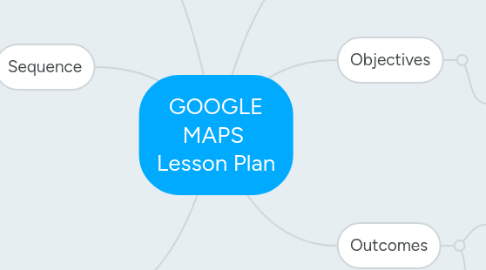GOOGLE MAPS Lesson Plan
PL3 J4BC0により


1. Materials
1.1. Google Maps, Internet, Search Engines, Computer Lab, rough draft sketch
2. Sequence
2.1. Activation: students will reflect prior knowledge on their influences and inspirations. "What makes you YOU? What interests, experiences [good and bad] made you the person you are today? How do you predict you will change as new influences enter your life?"
2.2. Acquire: In class lessons on how Shakespeare has influenced the English language, a look at the literary period timeline and how it compares/aligns with music and world history timelines. Also looking at where the people from these historical were, and the geographical tracking of their influence.
2.3. Apply: Summative Assignment!
3. Assessment
3.1. Formative: reflections on what qualities they like in literature (do they prefer fiction? Non-fiction? Poetry? Suspense? Eloquent language? Twists?) Compose short stories and poetry as activation exercises; how would you describe your writing style? Who or what do you think it is influence by?
3.2. Summative: Select an author (or poet/songwriter) you feel your writing is influenced by and retrace THEIR influences back at least 4 (no more than 7) people. Through research (reading/viewing/listening), briefly describe the aspect of their literature that influenced the next person. THEN, on Google Maps, plot each person in a separate layer and attach a photo and/or sample of their literature (or music, painting, etc.) The first layer will be YOU, the next layer your immediate influence, the third your influences influence, etc.
4. Course: 40S ELA Literary Focus
4.1. Can also be adapted for Music, Visual Art, and History.
4.2. Unit: Many Parts Make a Whole; Tracing Your Influence
5. Objectives
5.1. As a result of these lessons/this assignment, students will have a better understanding and appreciation for the types of literature they enjoy through research of lineage of influences. Students will also understand how aspects of a genre can be transformed into something new.
6. Outcomes
6.1. Curricular: 5.2.2- Relate Texts to Culture: Identify and examine ways in which texts reflect cultural and societal influences. 5.2.1- Share and Compare Responses: Consider various ideas, evidence, and viewpoints to expand understanding of texts, others, and self. 4.4.1-Share Ideas and Information: Present ideas and information using a variety of print and other resources and interactive approaches. 3.1.1-Use Personal Knowledge: Determine inquiry or research focus based on personal knowledge and interests and on others’ expertise. 3.3.4- Develop New Understanding: Integrate new information with prior knowledge to draw logical conclusions and to refine understanding; consider alternative ways of reaching
6.2. ICT
6.2.1. Cognitive: P-3.2 design own electronic plan G-3.2 assess textual, numerical, aural, and visual info, as well as media sources, to determine context, perspective, and bias. Pr-3.1 designs and creates non-sequential ICT representations
6.2.2. Affective: E-1.3 recognizes the need to acknowledge authorship of intellectual property
